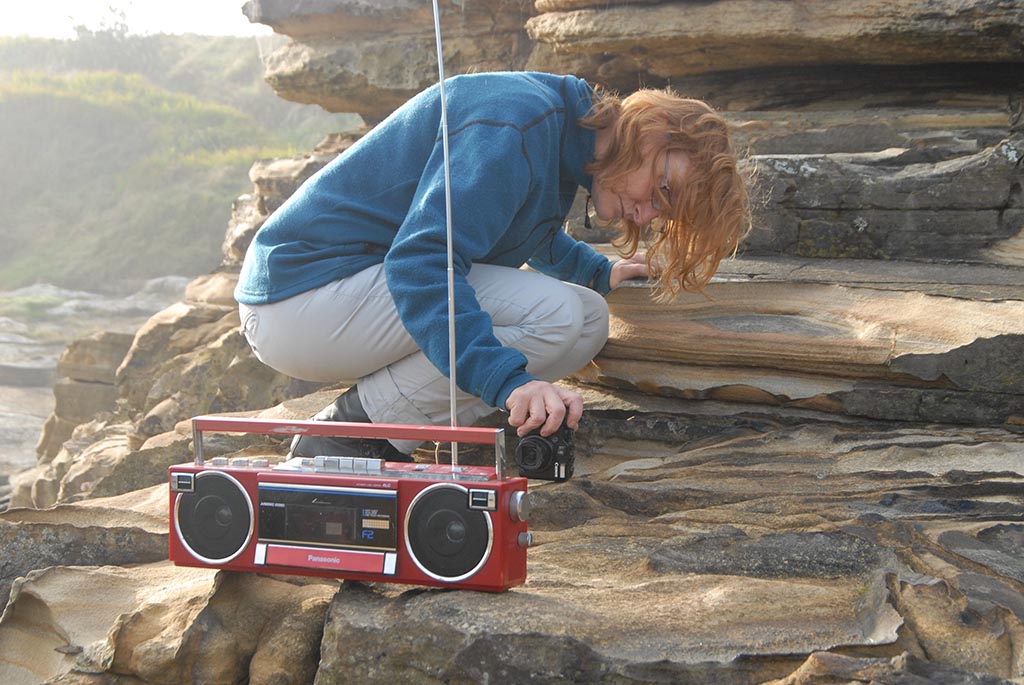If you scream at a bird, you’ll never hear yourself…
As curators we work with composers, experimental musicians, visual artists who use sound, and sound artists. Sound, as a fluid idea and an intangible material, defies easy categorisation and demands a porosity of context, but our cultural infrastructures – our funding systems, our physical spaces, our piles of speakers – impose generic modes of listening, filtering our reception of the sonic into predetermined modes. Rather than try and define sound, to delineate its borders, to hem in to a particular vocabulary its form and frequency, we would rather ask how sound-based practices reflect, or pass through, the surfaces that surround them.
Outside of the black box and the white cube, the concert hall and the night club, we hear the sonic reverberate through our social and political eco-systems with increasing urgency. Militarised police deploy LRAD sonic devices violently against Black Lives Matters protesters. The devastating effects of settler colonialism and capitalism on the environment demand a new listening to the natural world and to long-silenced indigenous voices. Societies teetering on the brink of right wing revivals search for new sounds and new voices to construct (or deconstruct) national identities.
In Ursula K Le Guin’s “Carrier Bag Theory of Fiction” the carrier bag/belly/box/house/medicine bundle in which stories are gathered is a site of continuing process. There is no single, thrusting narrative, no hero contained therein. As all sound can be modulated and reflected, can be overheard or interrupted, its topography too sidesteps these linear constraints. So into our carrier bag we invite four artists living and working in Norway to help us echo-locate the presence of urgency in sonic practice, and to let us eavesdrop through their work a boundless questioning of where we are and how we live.
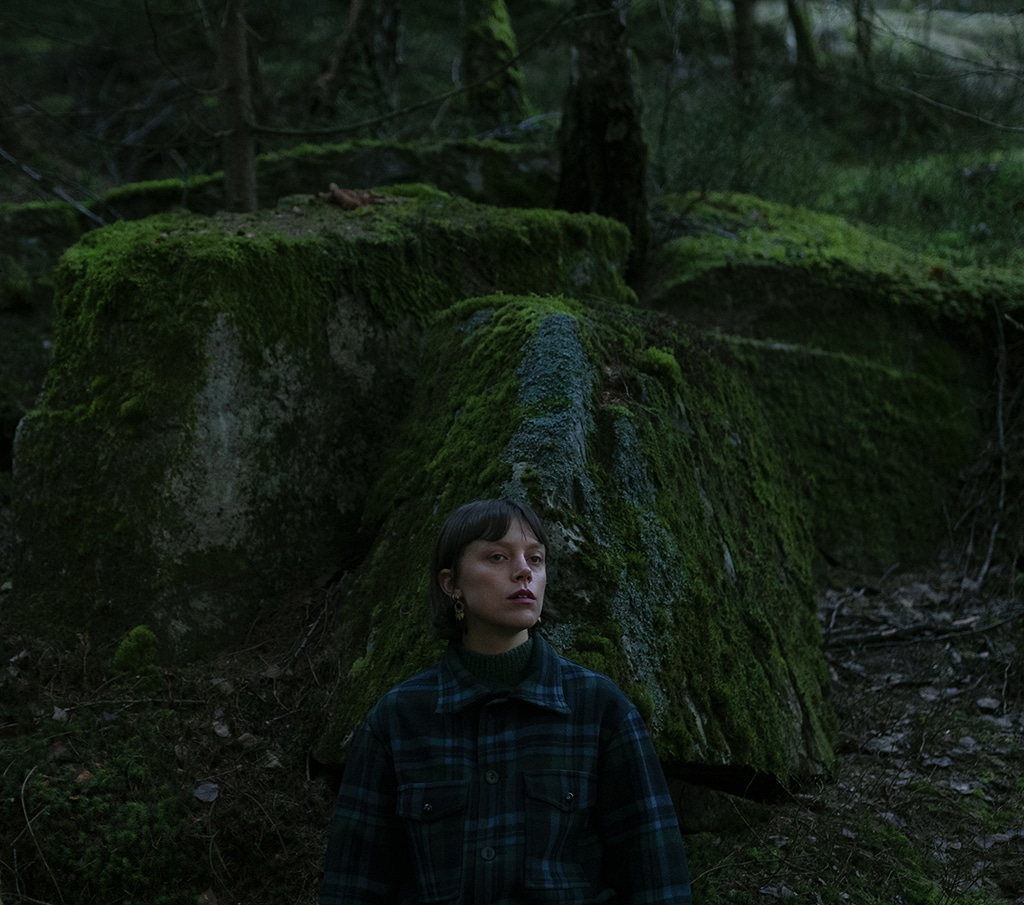
Elina Waage Mikalsen is a multidisciplinary artist and musician from Tromsø, Sápmi/Norway. Currently based in Oslo she works within the fields of sound, video, performance, installation and text-based mediums. Her core source of material is the body, in its physical, remembering, sounding and acting capacity.
“The first sound in my life was my mother’s voice, the waves softly directed towards me through a layer of flesh, blood and water. The sounds penetrated my skin, covered me in a blanket below 500 Hz.
As all the eggs in the female body are already there from the beginning, I was inside my mother’s body as she laid inside my grandmother’s body, waiting to be born. I think about the sounds from that time, the stream in the spring with its roaring voice shaking my grandmother’s body, my mother’s body and the cells that one day would be me. Calling the sheep in the fall, a voice that makes all the resonant chambers of stomach, chest, throat and head quiver. Her sharp voice, I know that sharpness, it’s inside me as well. When I reverberate, time collapses, and a string is drawn between this moment and other moments, other nights, other people, starting a vibration, knowing very well how it continues until it is sucked into the surface of a stone.
My stories have turned into secrets. All I can do is to locate the silent gaps, and let them speak their language. In my shattered self a combination of stories and holes creates my surface, my weave. A punch card, a binary code, a secret, a loss of information. What appears between what is, and what is not? How do I listen to a sound(land)scape that is no longer there? This physical landscape, so embedded in all of us, I imagine how the maps align, the river is the intestines, the mountains are the skin, the swamp is the tongue, the seashore a big wet eye opening and closing. A body filled with itself, listening back. This body is not neutral, neither is my voice. It’s full of connotations to navigate between. These navigations are my dance, the sensitiveness and ambiguity that every person drawn between cultures knows very well. The very same sensitiveness that I need to be able to listen to the landscape and to hidden stories is the one that stops me in fear of being too much, too little, too silent, too loud. My movement is a dance of changing form whenever needed.
My everyday environment is filled with noise, my refrigerator is putting more sound-babies to the world than I am. It’s an easy thing to do. So I need to be conscious, and use my dance to find the holes in the stories, the silent spots that, if I just listen closely, suddenly have a voice.”
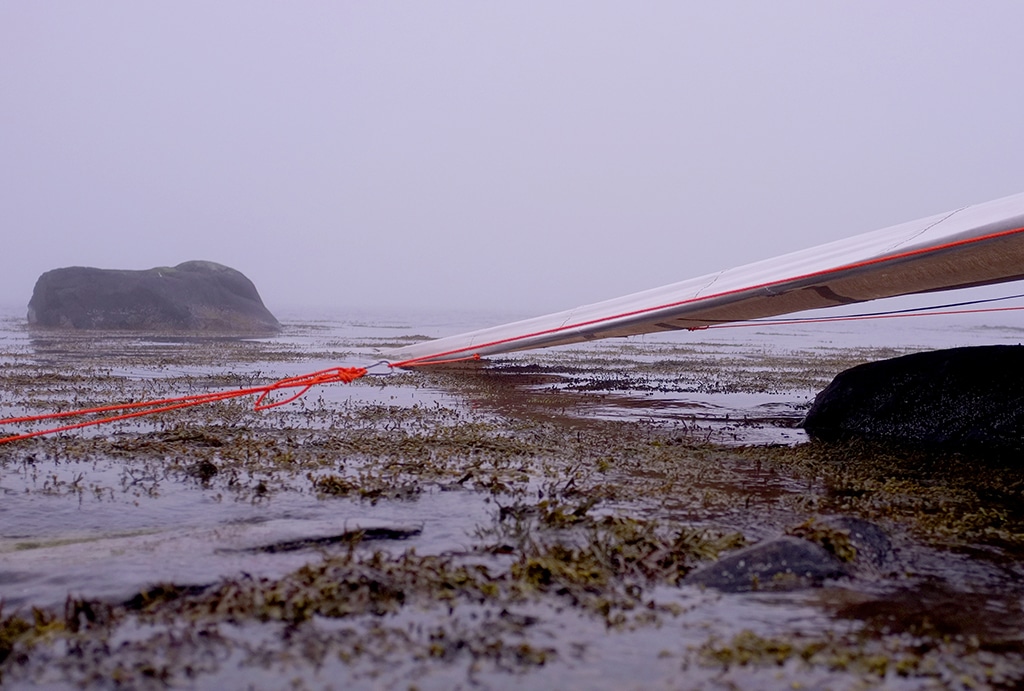
Signe Lidén´s work spans from sound installations, sculpture, video and performance to more documentary forms such as sound essays and archives. Currently living in Oslo, she is interested in how places and their histories resonate; in memory, through narratives and various materials, as ideological manifestations and political territories.
“A hyperventilated cry for change as a deadly necessity resonates from everywhere. You ask: How is the sonic political in your work? As my exploration of long-term thinking in relation to place seems so disproportionate with the urgency and scale of environmental, racial and social injustices, I ask myself, is there time for the long and slow, or is it merely a delay? More than an attempt to answer, I will reflect upon how my work engages with its surroundings and pursue ideas of alternatives.
In 2016, Espen Sommer Eide and I were invited to create a work in Nikel, Russia, as a part of the Dark Ecology project. Trajectories between breath, wind, sound and contamination formed the place-specific performance Vertical Studies: Altitude and History. Our interest in the relation between sound and history had let to the idea of initiating Nikel Sound History Club where we invited residents to think of the changes in the city through sound memories. Many of their stories were about the wind and sounds made by wind. The vegetation in the area had disappeared because of a forest fire and due to heavy mining activity, it did not return. The city between the “dead” hills had become a wind-tunnel. The wind was also an underlying political conflict between the bordering nations as contaminated air was blowing from the Nikel smelter over the borders. Espen and I started building wind instruments to be tuned to the drone from the smelter that changed pitch with the altitude of terrain. Together with “vertical speakers” and “longitudinal resonance rods”, they became our instruments for the final performance. Espen led local and visiting audience on a walk up a mountain with a self-build electronic harmonica on which he blew out fragments of wind stories and music. After weeks with strong breeze, the wind dropped completely when the audience reached the top where the wind instruments were mounted. Surprisingly, the lack of wind, the main protagonist of the performance, was everything but a failure. Its absence led to a collective presence where we all listened to the place and every sign of a change in weather and started improvising.
When writing about sound art, there has been a tendency to oppose the visual with the sonic in a dominant – emancipative relation. I never found this approach generative. Sound is my main medium but my interest lies in exploring how multiple senses feedback with/on its surrounding and how these rhythmic relations negotiate place. Place is not a fixed point but a constant becoming that I approach through field recording, instrument building and conversations.
In one of my latest works, I studied the intertidal zone at Ramberg, a fishing village in Lofoten as a part of LIAF 2019. Throughout the zone, I stretched a large scale sounding canvas that both performed as a 28 m recording instrument and a shelter for conversations. Throughout weeks I researched the relationships between the tide, rhythm, sensing, and long-term thinking through recordings and conversations with school children, neighbours and scholars.
The canvas recorded in and above water and the tidal surge sounded like a breath, or multiple breaths from afar and passing through you at the same time. I discussed the idea of approaching the tidal as a sense with one of the scholars, Grace Dillon, who is Anishinaabe and professor in literature and indigenous science. She explained how her own language were “infused with water” and shared a bounty of concepts for tidal thinking. Inspired by this process-oriented vocabulary rooted in place based knowledge, I sought equivalents in the local dialect. One word, skybåre, means “ocean-wave” but as “sky” means “cloud” it sounds to me like “cloud-carrier”. A local friend reflected on the origin of “båre”: “båra is from bør, the wind that you need to sail but is also båre, a bier that carry you to your last rest. So the breath, life and death merges into one concept.” As “sky” adds a sense of weather and wave, this word skybåre is a gateway to knowledge.
Karen Barad’s statement: “not a thing but a doing”, resonates with the listening oriented approach to place that I seek to convey throughout the process of my work. When thinking of the audiences as listeners and doers, the installations and performances offer a space to practice alternatives.”
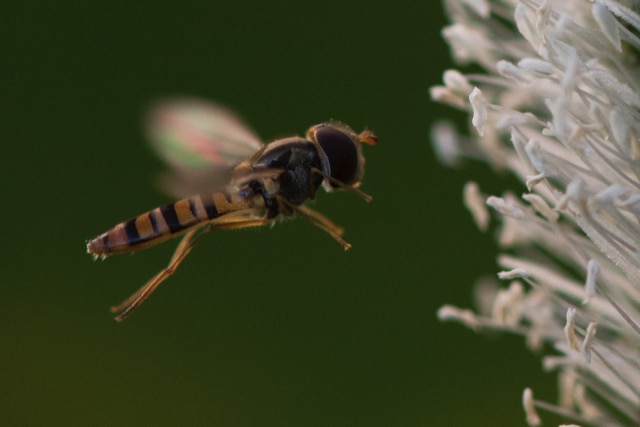
Jana Winderen is an artist who currently lives and works in Norway. Her practice pays particular attention to audio environments and to creatures that are hard for humans to access, both physically and aurally – deep under water, inside ice or in frequency ranges inaudible to the human ear.
“I’ll tell you a story. During the lockdown I spent a lot of time listening around the farm, just north of Oslo. It’s the family farm where I grew up, and because of the COVID-19 situation, this time I noticed how much the listening space was opening up. I’d sit here and I could hear the swans flying from really far away. I could hear them come every morning at 9am, and they would fly over taking a really long time to pass, and eventually I could hear them disappear in the far distance. I heard different species of bird that I hadn’t ever seen before, even though they had been here every year during my childhood. I became aware of how much I hadn’t listened when I was growing up.
There are windows all around my studio here, and with them open at night I’d follow a couple of magpies nesting on one side having chicks. One morning in May I’d open the window and in the distance I could hear a northern lapwing play, and on the other side of the house I could follow this couple of wood pigeons mating and courting – and in the night they get a bit clumsy, and when I’d take my dog Charlie out to pee I could hear these clumsy birds falling out of the tree where they were sitting, making a lot of noise! Even the roe deer had their grunting sounds when they were coming by in the evenings to rest for the night. I began to hear the whole of the environment.
After a time though the cars and human sounds started to come back, and the listening space around me got smaller. When the swans were flying over they would disappear much earlier, as the sound of the traffic would be masking the sound in the distance.
I was in the garden around the apple tree one day and I heard this enormous amount of screaming from the pathway down to the farm. Approaching was a whole group of 15 screaming eleven-years olds. I thought to myself, well, this is a time when I can actually talk to them about listening. I’ve been thinking a lot about what I can do in the local community now when I can’t travel. So, OK I thought, I’m going to talk to them. I stopped this group of children and said, “if you are going to go past here you really can’t be screaming this loud, not that I am saying you should shut up for me, it’s for yourself, so that you can really listen or you will miss and scare away what is actually around here.” I told them the story of myself, that I had heard birds and animals I had missed when I was their age. I said, “You don’t just scare each other, you scare everything around you and it will go and hide. You will miss the deer and the fox and the badger, there’s mice, and you miss all of them..” I looked at one and one and one of them, and said, “do you understand what I’m saying?”. They nodded, they understood, and then they walked off really really quietly, haha…
We have something in Norway called outdoor voice and indoor voice, you can scream at the top of your voice when you’re outside, but inside you have to be quiet, I think it’s a bad idea that it’s kind of OK to scream at a bird. The image of children screaming at a small bird stuck as an image in my head – small children, rraaaargh over a bird – I think it’s a sign of our time, our stress. Perhaps humans, just like birds and animals in the ocean, have to raise their voices. Then we don’t hear each other and get stressed at a subconscious level. To have this constant stress up close all the time can be very unhealthy I think, and deadly underwater, and deadly above water too. We are listening all the time, it’s not a separate thing we just do, we relate to sound constantly. This image is just crazy to me of a small child screaming at a bird. You can’t hear anything if you scream so loud yourself.”
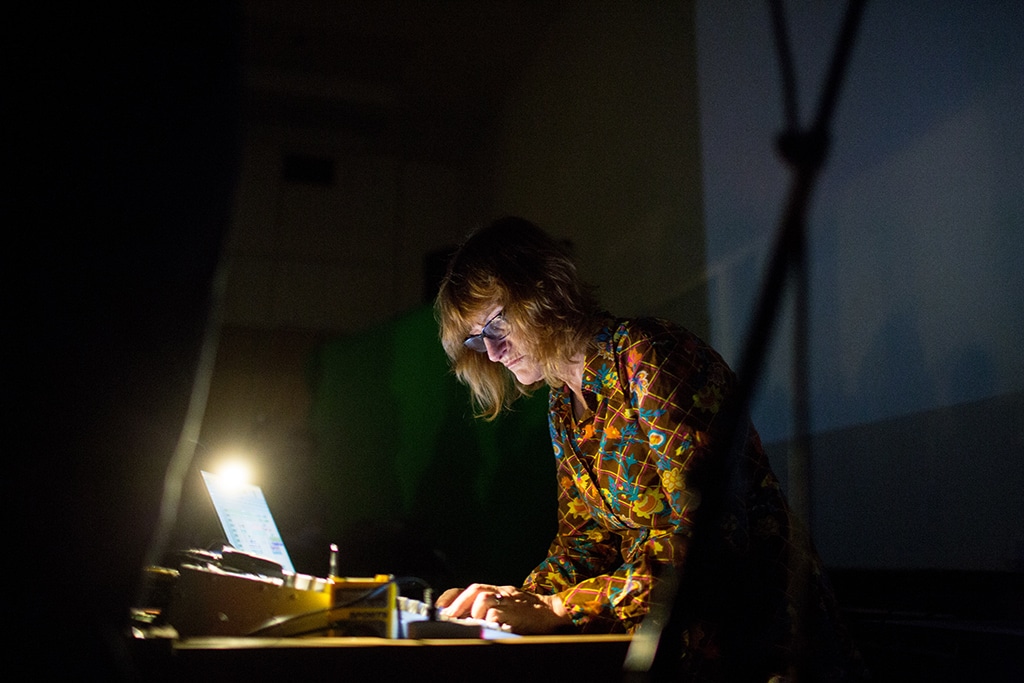
Maia Urstad is an artist based in Bergen, working at the intersection of audio and visual art. Technological progress and communications technology are pervasive themes in her projects, using radio as a key audio, visual and conceptual element.
“The space between the sonic and the visual is for me an exciting field to operate within. Here, visual and sonic elements intertwine – together they fill an entire space, field or location, be it physical, ethereal or digital. I work primarily with spatial sound installations, and also poke around performative sound experiments. These are carried out in solo projects as well as through collaborations with other artists, and are in many ways the result of an “eco-system” of constant observation and learning – artistically, socially, politically, community-wise – a circular process from idea to sketches, development, reflection, back to idea, etc.
I like working with series in slow development, often over several years, as a method of carving out a deeper understanding of content and material – one project leading to the next, diving into new challenges along the way. I also like to work with multiple layers of sounds and information, and think of my works as associative experiences more than utterances with clearly articulated textual content, the arguments remain in the work itself. At the same time, they reflect and are an offset of my experience of the social and political challenges we live in. I aim to provide conditions for an attentive presence and experience – both on a sensory level without prior knowledge, and hopefully my reflections will also filter through the work. Generally speaking, to be attentive to our surroundings, is for me an ethical and political act. I would also argue that the presence of slow time as well as paying attention to details we are not immediately aware of, is a shortcoming we need to address.
In my site-specific works, visual and sonic expressions both characterize and influence a site’s characteristics. In the last few years, I have developed and presented sound installations for, among others, a train carriage in Struer, Denmark; a site for Cider production in Hardanger, Norway; a barn at Osterøy, Norway; a public passage in Bonn, Germany; a fortress in Kongsvinger, Norway; a commission for German FM-radio; as well as more traditional exhibition spaces. By “moving into places” for a period, I delve into the place’s uniqueness, trying to get the grip of the history, structures, mechanisms, sonic characteristics, what is told and what is hidden – or missing – in the history that is conveyed, and what can be added. The site that the work is presented at plays an important role in relation to how the work is being perceived, depending on what it is in dialogue with. In some instances it alters the content of the work.
Murmur – a radio installation exhibited in 2019 at the Borderline festival in Athens, and at the XIV Biennial of Media Art in Santiago de Chile – examines soundscapes in our radio history which are on their way to obsolescence. The biennial exhibition opened 17th October 2019 – the following day the protests in Chile erupted and the museum was forced to close. The works inside the museum were in a way silenced, but the noise of the revolution was loud and powerful on the outside of the museum; banging on tin-cans, different rhythms, voices, noises… Mirroring the sounds that we find on the border between highly present and expired forever, the context of Murmur in Santiago felt relevant in other ways than expected. Technical errors, such as the buzz and interference of analogue radio are continuously being silenced in the name of technological improvement, sterilising and standardising our listening practice. As manifestations in the streets are attempted to be silenced through tear gas and rubber bullets. It is this noise we need to embrace, and incorporate errors as a necessary part of an entity, the not perfect, the still usable – in order to hear what we, and the globe, actually needs to become more sustainable. To create a just society, we need the will to listen, the will to change, and the will to express ourselves. An attentive listener has by proxy a sensitivity and openness to our surroundings. Our society needs us as good listeners and with the will to see and act.
Peter Meanwell is Artistic Director of Borealis – a festival for experimental music in Bergen, Norway, and Director of audio production company Reduced Listening.
Maria Rusinovskaya is currently Live Programme Curator at Bergen Kunsthall, and in December 2020 will take over as the new Director of Bergen Centre for Electronic Arts.


